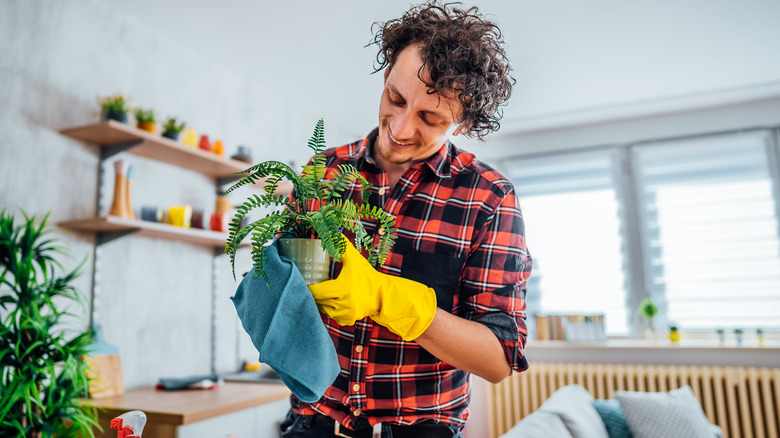If you’re a plant enthusiast who’s been hacking away at this hobby for some time, then you ought to know all about the uglier side of plant collecting and curating. While Instagram may make it seem like it’s all glistening leaves and bespoke planters, there is care and upkeep that requires elbow grease, patience, and time. One of those tasks is tending to the pots that your plants call home.
Over time, minerals like calcium can cause buildup on the outside of potted plants due to the water containing dissolved calcium evaporating, leaving behind deposits. This phenomenon is especially common in areas with hard water, which has a high concentration of minerals like calcium. As the water evaporates, the calcium minerals are left behind and accumulate on the surface of the plant pots. Over time, these deposits can form a white, crusty layer that is difficult to remove. Regular cleaning and maintenance can help prevent and remove calcium buildup, ensuring healthier and more aesthetically pleasing potted plants. One unlikely tool that can expedite this cleaning process that you already have at home is a can of WD-40.
How to apply WD-40 safely to your pots

To safely use WD-40 to remove calcium buildup from the outside of planters, first, prepare the planter by removing any excess dirt or debris from the surface. This can be done by gently brushing or wiping the planter with a soft cloth or brush. It is important to ensure the planter is clean of other residue or debris before applying WD-40.
Next, shake the can of WD-40 well to mix the ingredients. Hold the can about 6 to 8 inches away from the planter and spray a light, even coat of WD-40 onto the affected areas. Be careful not to overspray or saturate the planter, as this can cause damage to the plant or the planter itself. After applying WD-40, let it sit on the planter for four to five minutes to allow it to penetrate and loosen the calcium buildup. Then, gently scrub the affected areas with a soft cloth or brush. The calcium deposits should start to dissolve and come off easily. Rinse the planter with water to remove any remaining WD-40 and calcium residue.
To prevent calcium deposits in the future, try using filtered water or collected rainwater for watering your plants. This will help reduce the mineral content in the water and minimize the buildup on the planters. Additionally, regular cleaning and maintenance of the planters, including wiping them down with a soft cloth or brush, can help prevent calcium buildup from occurring.